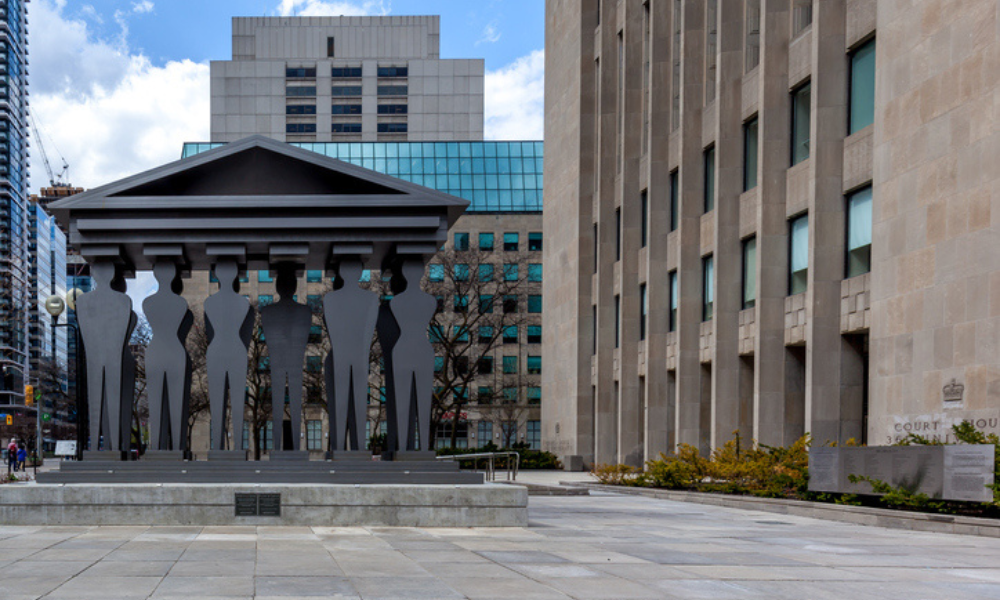
The process is inefficient and expensive, but we should expect no less

The Ontario Superior Court, in its Guide to Judicial Review in Divisional Court, defines judicial review as the court’s process to ensure decisions of administrative bodies are fair, reasonable and lawful. That definition, like the guide itself, is only partially correct, as in many cases, courts can judicially review decisions by private “voluntary organizations” (think religious denominations and sporting associations), though as set forth below, the procedure varies. Specifically, depending upon the decision maker and relief sought, jurisdiction sometimes rests with the Divisional Court, sometimes the Superior Court, and sometimes partly (and exclusively) with each.
Judicial review of public administrative bodies such as tribunals, municipalities and governmental decision-makers is generally governed by the Judicial Review Procedures Act, R.S.O. 1990, c. J. 1. Among other things, this requires an application to be brought within thirty (30) days to the Divisional Court. Under the Act, the Divisional Court has exclusive jurisdiction where mandamus, prohibition or certiorari are sought (unless the matter is urgent, in which case the Act allows the application to be made to the Superior Court).
However, the procedure defined by the Act (namely an application under rule 68) carries a significant pitfall in that a responding party can participate throughout the process (including at case conferences with a judge) without raising any issue regarding jurisdiction before introducing this in their responding factum, often served shortly before hearing. The applicant is then left to choose between proceeding on a record that likely contains little relevant to Divisional Court jurisdiction, attempting to supplement the record after cross-examination, or being forced to abandon the application on a technicality.
A second pitfall arises because the Divisional Court is a statutory court with its jurisdiction defined in s. 19 of the Courts of Justice Act, R.S.O. 1990, c. C.43, as related to appeals. Though a branch of the Superior Court, using the same facilities, staff and judges, its judges have, apparently by unwritten custom, determined that they lack the authority to transfer matters to the Superior Court or even to hear appeals that should have been commenced in Superior Court (in apparent contrast to s. 19(2) of the Act). This lack of authority to transfer is curious, given the frequency of transfers to and from the Small Claims Court (also a statutory court), and the court has established court-to-court protocols with foreign jurisdictions to hold joint trials where necessary. Thus, where unwary counsel commence matters in Divisional Court that should have been started in Superior Court, such counsel likely must self-report to LawPRO.
Judicial review of administrative decisions is further complicated by the fact that the Divisional Court does not have jurisdiction to hear applications for declaratory relief unless this pertains to the exercise or refusal to exercise a statutory power or if the decision complained of is of a public law nature to which a private remedy can be applied. Thus, as mentioned above, it is possible to bring an application for judicial review, where the Divisional Court has exclusive jurisdiction for some parts of the claim, while the Superior Court has exclusive jurisdiction for the remainder, apparently requiring parallel proceedings.
In this regard, cases involving sporting associations (i.e. suspensions and discipline) can be particularly fraught. For instance, if a group of friends expelled one member from a weekly informal pick-up game, such expulsion/discipline would likely be non-justiciable (with the same logic applying when a member is kicked out of a religious congregation that lacks a written constitution or bylaws). However, if the sporting association has bylaws or a written constitution, then the duty of procedural fairness likely applies and can be subject to judicial review, but…..
As stated above, the procedure (and court) can be variable. For instance, in Rankin v. Alberta Curling Federation Appeals Committee, 2005 ABQB 938, four curlers sought judicial review of their suspensions, which arose after alleged misconduct at a curling tournament. After that, the league appointed directors to review the misconduct, who elected to suspend the four curlers without notice or a hearing. The curlers appealed to the Alberta Curling Federation, but the suspension was upheld without reasons. The curlers sought judicial review, which was granted, given that basic procedural fairness had not been employed. However, the Rules of Court had been updated in Alberta, mainly eliminating the distinction between statutory and private tribunals. The Ontario Superior Court, conversely, has, to a large extent, and per one of its leading jurists, not felt the need to update its rules beyond making six tweaks since 1881.
Similarly, in Gymnopoulos et al v. Ontario Association of Basketball Officials, 2016 ONSC 1525 the applicant sought judicial review (through certiorari) quashing his suspension from coaching. After consideration of the Air Canada v. Toronto Port Authority, 2011 FCA 347 at para. 60 factors, and finding a lack of procedural fairness throughout the discipline process, the court set aside the decision. Had the applicant not satisfied the Air Canada test, and given that the respondent had a constitution and by-laws, the applicant could still have sought judicial review but would have needed to proceed in Superior, rather than Divisional Court, to enforce his contractual rights. The issue of jurisdiction in similar cases has further been muddled by enacting the Not-for-Profit Corporations Act, 2010, SO 2010, c 15, s 51.
Given the conflicting jurisdiction of the Superior and Divisional Court, and coupled with the fact that matters can (apparently) only be transferred from Superior to Divisional Court, cautious counsel are advised to commence applications in Superior Court (or both), cite the Judicial Review Procedures Act, R.S.O. 1990, c. J. 1 as authority, and request as relief (among other things) both a case conference, and for the matter to be transferred to Divisional Court if necessary. Of course, that is an inefficient and expensive procedure that wastes scarce judicial resources, but we are (again) discussing the Ontario Superior Court.